Jihun Oh
A Comprehensive Evaluation of Quantized Instruction-Tuned Large Language Models: An Experimental Analysis up to 405B
Sep 17, 2024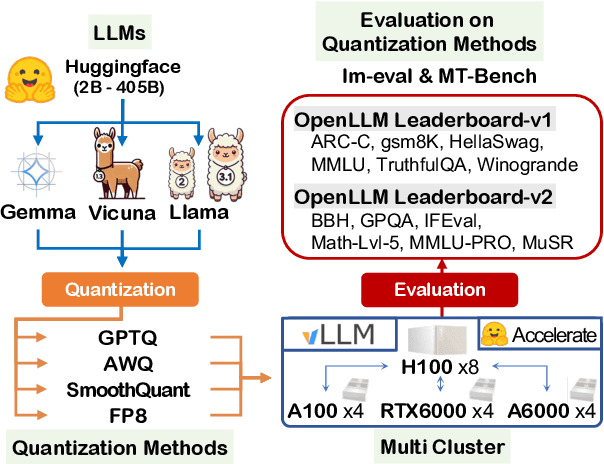
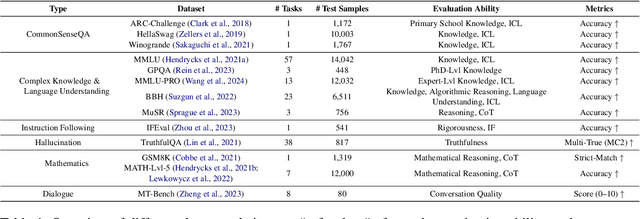
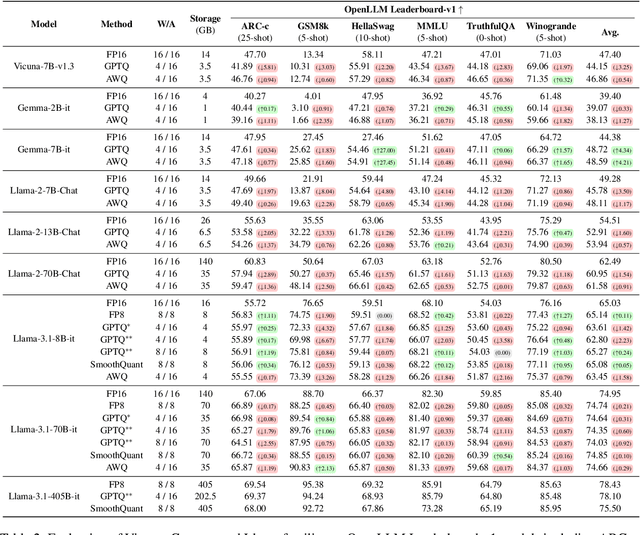
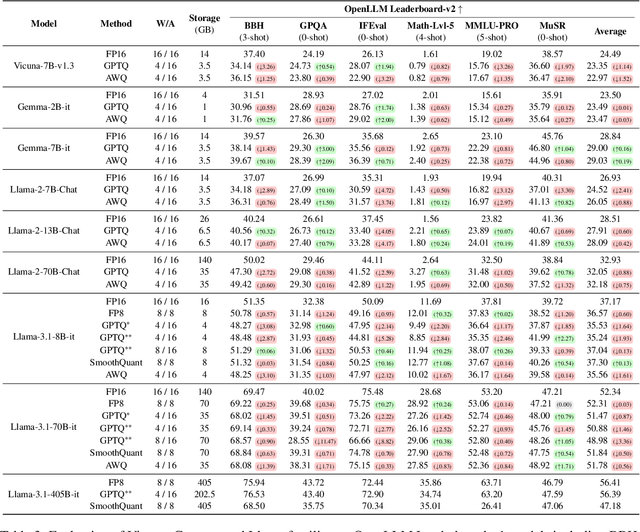
Abstract:Prior research works have evaluated quantized LLMs using limited metrics such as perplexity or a few basic knowledge tasks and old datasets. Additionally, recent large-scale models such as Llama 3.1 with up to 405B have not been thoroughly examined. This paper evaluates the performance of instruction-tuned LLMs across various quantization methods (GPTQ, AWQ, SmoothQuant, and FP8) on models ranging from 7B to 405B. Using 13 benchmarks, we assess performance across six task types: commonsense Q\&A, knowledge and language understanding, instruction following, hallucination detection, mathematics, and dialogue. Our key findings reveal that (1) quantizing a larger LLM to a similar size as a smaller FP16 LLM generally performs better across most benchmarks, except for hallucination detection and instruction following; (2) performance varies significantly with different quantization methods, model size, and bit-width, with weight-only methods often yielding better results in larger models; (3) task difficulty does not significantly impact accuracy degradation due to quantization; and (4) the MT-Bench evaluation method has limited discriminatory power among recent high-performing LLMs.
Weight Equalizing Shift Scaler-Coupled Post-training Quantization
Aug 13, 2020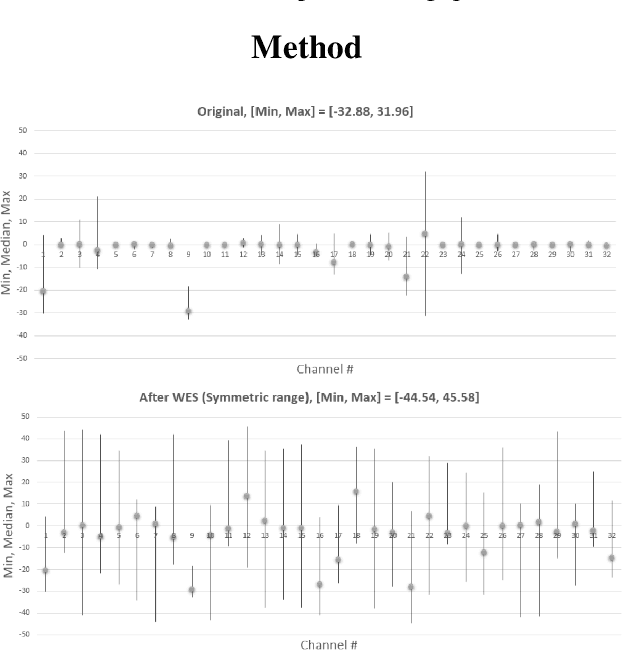
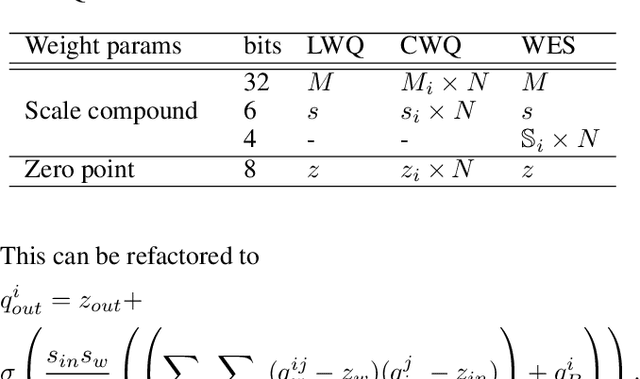

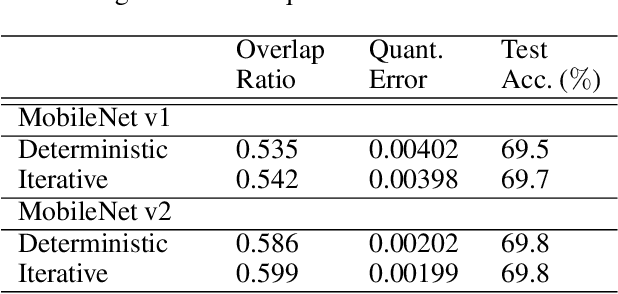
Abstract:Post-training, layer-wise quantization is preferable because it is free from retraining and is hardware-friendly. Nevertheless, accuracy degradation has occurred when a neural network model has a big difference of per-out-channel weight ranges. In particular, the MobileNet family has a tragedy drop in top-1 accuracy from 70.60% ~ 71.87% to 0.1% on the ImageNet dataset after 8-bit weight quantization. To mitigate this significant accuracy reduction, we propose a new weight equalizing shift scaler, i.e. rescaling the weight range per channel by a 4-bit binary shift, prior to a layer-wise quantization. To recover the original output range, inverse binary shifting is efficiently fused to the existing per-layer scale compounding in the fixed-computing convolutional operator of the custom neural processing unit. The binary shift is a key feature of our algorithm, which significantly improved the accuracy performance without impeding the memory footprint. As a result, our proposed method achieved a top-1 accuracy of 69.78% ~ 70.96% in MobileNets and showed robust performance in varying network models and tasks, which is competitive to channel-wise quantization results.
Advancing GraphSAGE with A Data-Driven Node Sampling
Apr 29, 2019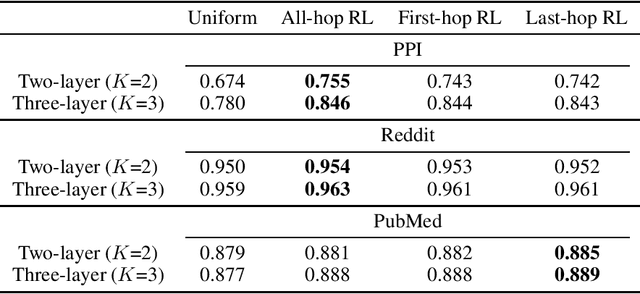

Abstract:As an efficient and scalable graph neural network, GraphSAGE has enabled an inductive capability for inferring unseen nodes or graphs by aggregating subsampled local neighborhoods and by learning in a mini-batch gradient descent fashion. The neighborhood sampling used in GraphSAGE is effective in order to improve computing and memory efficiency when inferring a batch of target nodes with diverse degrees in parallel. Despite this advantage, the default uniform sampling suffers from high variance in training and inference, leading to sub-optimum accuracy. We propose a new data-driven sampling approach to reason about the real-valued importance of a neighborhood by a non-linear regressor, and to use the value as a criterion for subsampling neighborhoods. The regressor is learned using a value-based reinforcement learning. The implied importance for each combination of vertex and neighborhood is inductively extracted from the negative classification loss output of GraphSAGE. As a result, in an inductive node classification benchmark using three datasets, our method enhanced the baseline using the uniform sampling, outperforming recent variants of a graph neural network in accuracy.
 Add to Chrome
Add to Chrome Add to Firefox
Add to Firefox Add to Edge
Add to Edge